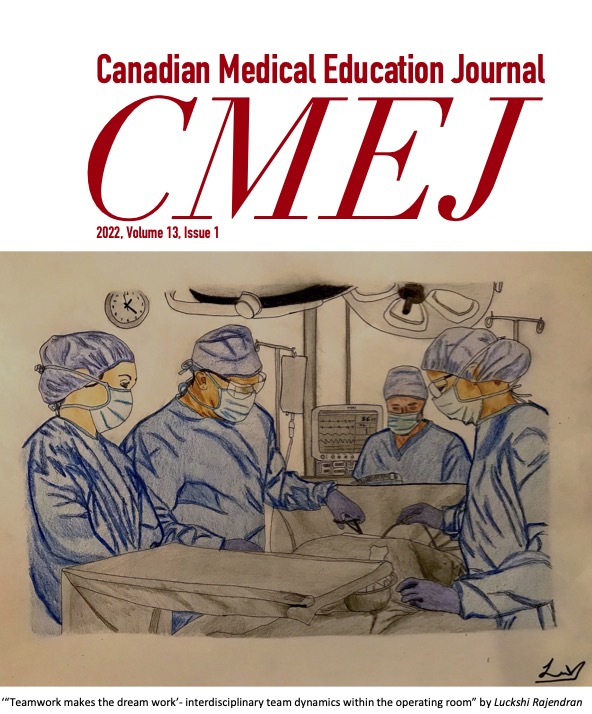The effect of case nodes in problem-based learning on the length and quality of discussion: a 2x2 factorial study
DOI:
https://doi.org/10.36834/cmej.71812Abstract
Background: Problem-based learning (PBL) relies heavily on case structure for their success. To make more meaningful cases, faculty introduced a “case node” that requires students to make a group decision on the action they will take at a given point in the case. The purpose of this study was to determine whether case nodes enhance PBL discussions.
Methods: Two PBL cases were designed with and without a node. In 2011, 2012, and 2015, first-year medical students were assigned one PBL case with a node and one without a node. In total, 26 groups processed cases with a node while 27 groups processed the same cases without the node. All sessions were audio recorded and analyzed to determine the length and quality of discussions.
Results: Groups with a node, regardless of case (M = 25.62, SD = 12.25) spent significantly more time in discussion on the node topic than those without a node (M = 16.54, SD = 10.33, p = .005, d = .80). Groups with a node, regardless of case (M = 14.38, SD = 8.04) expressed an opinion significantly more frequently than those without a node (M = 6.07, SD = 5.80, p < .001, d = 1.19).
Conclusions: Case nodes increased both the length and depth of discussion on a topic and may be an effective way to enhance case-based instruction.
Downloads
Downloads
Published
How to Cite
Issue
Section
License
Copyright (c) 2019 Sheri FT Fong, Damon H Sakai, Marcel D'Eon, Krista Trinder

This work is licensed under a Creative Commons Attribution-NonCommercial-NoDerivatives 4.0 International License.
Submission of an original manuscript to the Canadian Medical Education Journal will be taken to mean that it represents original work not previously published, that it is not being considered elsewhere for publication. If accepted for publication, it will be published online and it will not be published elsewhere in the same form, for commercial purposes, in any language, without the consent of the publisher.
Authors who publish in the Canadian Medical Education Journal agree to release their articles under the Creative Commons Attribution-Noncommercial-No Derivative Works 4.0 Canada Licence. This licence allows anyone to copy and distribute the article for non-commercial purposes provided that appropriate attribution is given. For details of the rights an author grants users of their work, please see the licence summary and the full licence.











